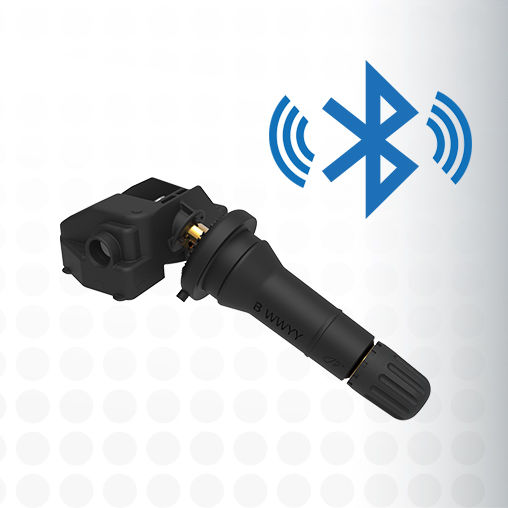Sensata low energy Bluetooth for tyre monitoring
- July 20, 2022
- William Payne

English firm Sensata has developed a Bluetooth Low Energy (BLE) tyre pressure monitoring system (TPMS) for vehicle OEMs. Low energy Bluetooth TPMS are a replacement for conventional UHF tyre pressure sensors, with better performance and safety.
The company reports that interest in BLE TPMS is on the rise as vehicles become more connected. While common in consumer applications like speakers and headphones, BLE is relatively new for TPMS. It is enabled by the latest vehicle system architectures which have introduced support for the technology.
Sensata’s new BLE TPMS builds on its existing tyre pressure monitoring sensors, UHF replaced with BLE radio to allow two-way communication. BLE TPMS is available in clamp-in and snap-in configurations. The system has been optimised for long battery life while providing the same pressure, temperature and auto-location capabilities as Sensata’s existing UHF TPMS solutions.
BLE TPMS technology helps improve vehicle safety, performance and the driving experience. The technology can enhance advanced driver assist systems (ADAS) and augment remote diagnostics support. With Over-the-Air updates, drivers can download new tyre-related features and software updates, enhancing their driving experience and avoiding a trip to the shop for service. BLE two-way communication also enables cyber security authentication, which is not possible with traditional one-way UHF, and adds a layer of protection from being hacked.
A leading vehicle maker in North America has selected Sensata’s solution for its electric vehicles and Sensata will be launching production in the first half of 2023.
“BLE TPMS is the natural evolution of the TPMS solutions Sensata provides today,” said Eric Sorret, Vice President of Automotive at Sensata Technologies. “This business award with a leading vehicle OEM is an exciting first step towards showing the added value BLE TPMS can bring to both OEMs and consumers. BLE TPMS opens the door to generating new data and insights that can improve vehicle safety, performance, and the overall user experience.”





